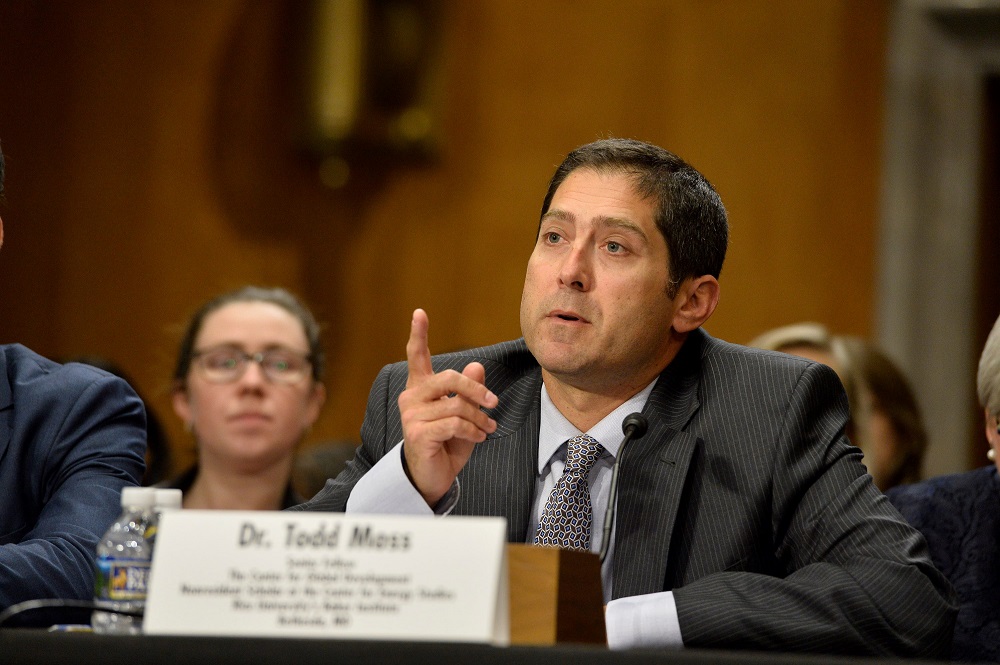Last week, Secretary of State John Kerry and World Bank President Jim Kim assembled government, multilateral and corporate leaders to discuss the importance of internet connectivity to development. The event was held to advance the Global Connect Initiative (GCI), a multi-stakeholder partnership launched by the State Department that aims to bring an additional 1.5 billion people online by 2020. It was an impressive gathering of governments from Afghanistan to Cote d’Ivoire to New Zealand; companies including Ericsson, Facebook, and PayPal; and a range of organizations such as the Institute of Electrical and Electronics Engineers, International Telecommunications Union, and NetHope. While the event generated important momentum, it didn’t resolve some big questions on how the initiative will increase prioritization, coordination, and impact.
In today’s digital economy, the speakers noted, internet infrastructure is as critical as roads, power, and ports. They cited examples of new possibilities created by connectivity – from distance learning opportunities to teenagers’ 3D printing their own footwear. Indeed, the potential gains in efficiency, inclusion and innovation are high, but without increased access, the digital divide will widen and exacerbate inequalities in income and opportunity. To help realize the benefits of connectivity, GCI pursues five lines of effort: prioritizing connectivity in development, accelerating work toward universal access, connecting remote and underserved areas and populations, promoting public access, and adopting policies to support connectivity.
But is internet access, in the words of Secretary Kerry, “one of the smartest investments that people can make anywhere in the world”? From my perspective, the answer is an unsatisfying, “It depends.” As the Global Connect Initiative moves forward, here are four questions it should focus on to ensure that it is a smart investment for the USG, its partners, and developing countries:
-
How will GCI align with country priorities and needs? Jim Kim acknowledged that achieving GCI’s target will cost an estimated $450 billion. Even if the overwhelming majority is invested by the private sector, this represents a huge commitment of effort and energy around planning, regulatory reform and aligning public and private objectives. Ultimately, developing countries themselves will have to view internet access as a priority for GCI efforts to succeed. But with huge gaps in road, water, and electricity infrastructure (not to mention many non-infrastructure needs), how will priorities be determined? Universal and affordable internet access is a laudable target embedded in the Sustainable Development Goals, and developing countries need to make long-term investments in broadband infrastructure. But I hope GCI engages in cross-sector discussions of what support and partnerships make sense in the broader context of national development strategies.
-
How will GCI assess whether it’s making a development difference? It’s stating the obvious but internet access (or any technology) alone doesn’t solve development problems. For the internet to drive development, “analog components” must be in place: regulations that create a competitive sector, skills so people can take advantage of digital opportunities, and institutions accountable and responsive to citizens. These are tough and enduring problems that policymakers and practitioners struggle with across sectors. While GCI cannot be wholly responsible for analog components, it should assess its efforts based on how far it moves the needle on them. This means systematically tracking progress beyond the number of new people connected to the internet. GCI can also help expand the evidence base on the returns of increased access, and the best pathways to achieve them.
-
How will GCI promote better coordination? At the event, participants “announced over 65 new and ongoing initiatives” in support of the initiative. GCI’s principles and initial roadmap provide a promising starting point, but it remains unclear how GCI will facilitate greater coordination among the wide array of commitments and establish linkages between “digital and analog” efforts. It will be important for GCI to build quickly on the work of its technical convening to move beyond a platform for showcasing commitments to one that strengthens learning within and across activities and partners.
- How can the US government better align its own effort and investment? The US government (USG) is increasingly using its convening power to launch multi-stakeholder partnerships (e.g., New Alliance for Food Security and Nutrition, Global Alliance for Clean Cookstoves), including in the internet space (e.g., Alliance for Affordable Internet). This is an important recognition of the complexity of development challenges and the need to harness the expertise and financial resources of governments, civil society and private sector. As with the broader partnership, the trick is to ensure effective coordination among USG agencies (Ex-Im, OPIC, USTDA, USAID, Commerce, and SBA) driven by evidence, analysis, and dialogue with country partners. Ideally, this would include a review of where USG tools match a particular country’s public and private needs – and an assessment of the “digital and analog” progress needed to meet specific development objectives. Through GCI, the USG could identify partnerships to fill the inevitable gaps between national connectivity plans, implementation, monitoring and evaluation. Beyond continuing in its convening role, the US can lead by example, infusing a coordinated and evidence-based approach into the broader initiative.
Secretary Kerry concluded with a story that illustrates the potential promises and perils of internet access. He talked about the need to “widen the circle of online opportunity” for youth, including those vulnerable to recruitment by extremists, so they have a productive future. Yet, as he is well aware, the internet has been a powerful tool for extremist networks. This is not a reason to walk away from aspirations around connectivity, but a stark reminder that the path between internet access and greater prosperity and stability is far from a straight one.
Disclaimer
CGD blog posts reflect the views of the authors, drawing on prior research and experience in their areas of expertise. CGD is a nonpartisan, independent organization and does not take institutional positions.




